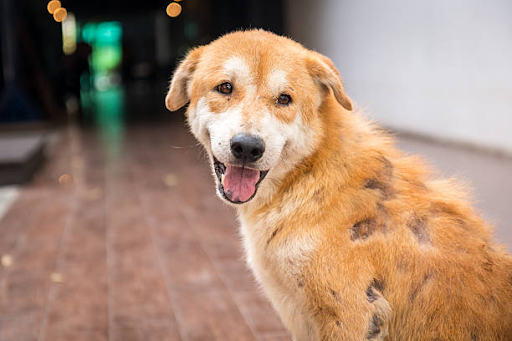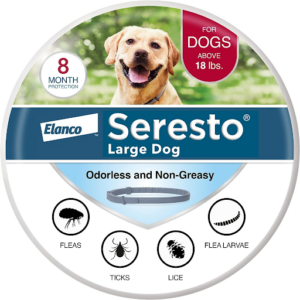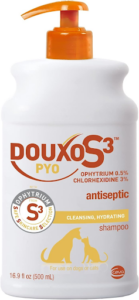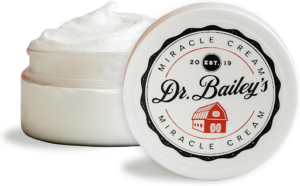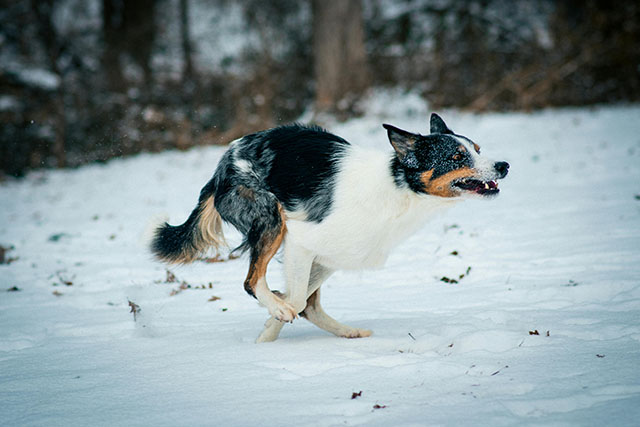It’s heartbreaking to see your pup suffering from a skin condition, but don’t worry – you’re not alone!
Skin problems in dogs are one of the most common medical concerns among pet owners. From allergies and yeast infections to parasites and hot spots, these skin-related issues can be both frustrating and difficult to recognize and treat.
In this blog post, we’ll look in-depth into recognizing, diagnosing, and treating some of the most common skin conditions affecting our beloved four-legged friends. Keep reading for an easy-to-follow guide on how best to care for them when they become itchy or uncomfortable!
What are the Most Common Skin Allergens for Dogs?
Dogs can develop skin allergies to various substances; identifying these allergens is essential to prevent and treat skin issues effectively. Some of the most common skin allergens for dogs include:
Fleas and Ticks
These tiny parasites are a common source of skin irritation. Flea bites can cause intense itching and lead to allergic dermatitis in dogs. Regular flea and tick prevention is key.
Food Allergies
Dogs can be allergic to certain ingredients in their food, leading to skin problems. Common allergens include beef, chicken, wheat, and soy. Switching to hypoallergenic or limited-ingredient diets can help.
Environmental Allergens
Pollen, mold, and dust mites can trigger allergies in dogs. Seasonal changes may worsen symptoms. Antihistamines or allergy shots can offer relief.
Contact Allergies
Dogs can develop skin issues from contact with certain substances, such as plants, chemicals, or grooming products. Avoiding the allergen or using hypoallergenic alternatives can help.
Atopy
Atopic dermatitis is a genetic predisposition to allergies, often caused by environmental factors. It can result in chronic itching and inflammation. Medicated shampoos and antihistamines may be prescribed.
For a comprehensive understanding of dog skin issues, please refer to this informative video.
What are the Signs of Skin Problems in Dogs?
To help your furry companion, you must recognize the signs of skin problems early on. Common indicators of skin conditions in dogs include:
- Excessive Scratching and Chewing: Frequent scratching or biting at the skin can indicate itching and discomfort.
- Redness and Inflammation: If you notice red, swollen, or irritated skin, it’s a sign of a problem.
- Hot Spots: Hot spots are localized areas of skin inflammation that can appear as moist, red, and painful patches. They often result from self-trauma caused by scratching or licking.
- Hair Loss: Thinning hair or bald patches can signal an underlying skin problem.
- Rashes and Bumps: Raised bumps, pustules, or hives on the skin may be a symptom of an allergic reaction or an infection.
- Unpleasant Odor: An unusual odor emanating from your dog’s skin can indicate infection.
- Changes in Behavior: Skin discomfort can lead to behavioral changes, such as restlessness or increased aggression.
How Do You Diagnose Skin Problems in Dogs?
When you notice skin problems in your dog, it’s important to consult a veterinarian for a proper diagnosis. They will perform a thorough examination and may use various diagnostic methods, including:
- Skin Scraping: To check for mites or fungal infections, your vet may perform a skin scraping and examine the sample microscopically.
- Allergy Testing: Allergy tests can help identify specific allergens causing skin issues. These tests may include blood tests or intradermal skin tests.
- Biopsies: In some cases, a skin biopsy may be necessary to determine the underlying cause of skin problems, especially if tumors or severe skin conditions are suspected.
- Cytology: Your vet may use cytology to analyze skin cells and determine if there are any bacterial or fungal infections.
- Imaging: In instances where deeper tissue problems are suspected, X-rays or ultrasound may be needed to assess the extent of the issue.
Once your vet determines the cause of the skin problem, they will recommend appropriate treatment options.
How do you Treat Skin Conditions in Dogs?
The treatment of dog skin conditions depends on the specific diagnosis, but here are some common approaches:
- Flea and Tick Control: Your veterinarian will suggest a suitable preventive treatment to address concerns regarding fleas and ticks. This may encompass oral medications, topical solutions, or collars. Consider trying the Seresto, a large dog vet-recommended flea & tick treatment & prevention collar for dogs weighing over 18 lbs. This collar provides 8 months of protection and is highly regarded by vets for its premium quality without the hefty price tag.
- Dietary Changes: If your dog has food allergies, switching to a hypoallergenic or limited-ingredient formula can bring relief. Your veterinarian can assist you in choosing the appropriate diet. Consider Nulo Freestyle All Breed Dog Food, a premium, allergy-friendly dry kibble that supports healthy digestion with a single animal protein source and BC30 probiotic. Available in a 24-pound pack.
- Medicated Shampoos: Medicated shampoos can effectively alleviate various skin problems, particularly allergies, hot spots, or bacterial infections. Following your veterinarian’s guidance on bathing frequency and choosing the right product is crucial. Consider trying the Douxo S3 PYO Shampoo, a top non-prescription topical brand highly recommended by U.S. veterinarians for treating infections and inflammatory dermatological diseases in dogs and cats. This shampoo has proven results in disinfecting, hydrating, and supporting the skin’s ecosystem, with a noticeable reduction in yeast counts in just 7 days.
- Prescription Medications: If allergies are the culprit, your vet may prescribe antihistamines or corticosteroids to manage symptoms.
- Immunotherapy: Immunotherapy may be recommended for atopic dermatitis to desensitize your dog’s immune system to allergens over time.
- Topical Ointments and Creams: Your vet might recommend topical treatments to alleviate skin issues or tackle infections. Consider using Dr. Bailey’s Miracle Animal Cream – a remarkable 2 OZ hot spot treatment for dogs. This all-in-one ointment is unrivaled in the market, serving as a safe initial wound care before visiting a veterinarian. It comprises natural ingredients like Moringa Oil, Malic Acid, Salicylic Acid, and Benzoic Acid. Designed explicitly for dogs, our fast-acting cream can be used as a hot spot treatment, dog paw balm, solution for allergies, lotion for dry and itchy skin, or any other dog skin irritation.
- Behavioral Modification: To prevent self-trauma from itching and scratching, behavioral modifications such as using an Elizabethan collar or managing environmental triggers may be necessary.
What is the Best Treatment for Skin Infection in Dogs?
Skin infections in dogs can result from various causes, including bacterial, fungal, or parasitic invaders. The treatment approach depends on the type of infection:
Bacterial Infections
Bacterial skin infections are commonly treated with antibiotics. Your vet will prescribe a suitable antibiotic, and it’s crucial to complete the full course of treatment, even if symptoms improve before it’s finished.
Fungal Infections
Fungal infections like ringworm often require antifungal medications. Medicated shampoos and topical treatments may also be recommended.
Parasitic Infections
Skin issues caused by parasites, such as mites or lice, may require specific parasiticides or acaricides. Your vet will recommend the appropriate treatment based on the type of parasite involved.
Supportive Care
In addition to medication, providing proper wound care and keeping your dog’s skin clean can expedite healing.
Following your veterinarian’s guidance when treating skin infections is crucial, as they may need to reevaluate your dog’s progress during treatment.
Conclusion: Caring for Your Canine’s Skin Health
Recognizing and treating common skin conditions in dogs is essential for ensuring the well-being of our beloved pets. Understanding the most common skin allergens, recognizing signs of skin problems, and seeking prompt diagnosis and treatment are all critical steps to ensure your furry friend enjoys a happy and itch-free life. Consulting your veterinarian is key to providing the best care and treatment for your dog’s specific skin issues.
Jessica is a veterinary medicine student who is passionate about animals. Living with her cherished dog, Milo, deepens her understanding of the human-animal connection, enhancing her empathy as a future veterinarian.
Jessica’s concise articles reflect her dedication to improving the lives of animals and those who care for them, making her an inspiring figure in the pet care field.

